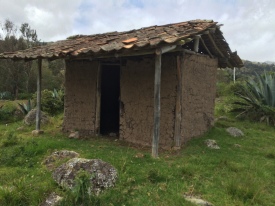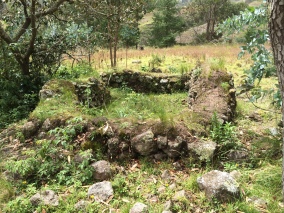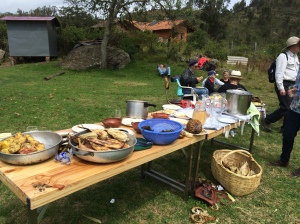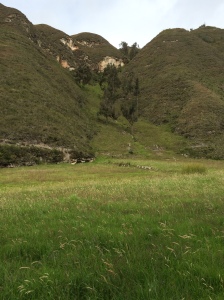Or “How We Celebrated the 4th of July in Ecuador”
Believe it or not, the 4th of July happens everywhere in the world. Here in Cuenca, we had several choices to pick from for how to celebrate this day. Quite a few restaurants offered special American menus like grilled burgers, barbequed ribs, etc. Many gringos that we know participated in the “Hearts of Gold” country fair fundraiser. And of course, there are always fireworks, but that has nothing to do with America’s independence. However, “Los Gano de Cuenca” opted do something very Ecuadorian for this day.
We went to the tiny community of Chobshi (House of the Moon) with ten other people from our Spanish school (Coffee Club Spanish). Chobshi is nestled deep within the Andes Mountains in south central Ecuador but I guess you could say that about hundreds of little towns in the area! By road, the town is about 70 kms from Cuenca. But as the crow flies, it is maybe twenty kms directly east of Cuenca. As you can see from the map, one must drive north, east, south, then north again and finally a little west to get there. 
It is well worth the circuitous route! Chobshi is an important archeological site and the small but thorough museum has many artifacts of Incan and Cañari origin.
Our hosts, Gumercindo Delgado and his wife Nube welcomed us warmly and explained to us (in Spanish) what we were to experience that day. 

In addition to enjoying the beautiful area, the Incan and Cañari ruins, and interesting artifacts, we were to partake in a traditional feast called Pachamanka. It included a cooking ritual based on the Cañari reverence to Pachamama (Mother Earth) as well as their dependence on the lunar cycle. The preparation of our pachamanka required our participation although most (but not all) of the heavy lifting had been done by the Delgado family. The pachamanka meal is cooked in a pit about 3 feet deep which is lined and layered with alfalfa. The heat source is 28 rocks preheated in a separate fire (one for each day of the lunar cycle).








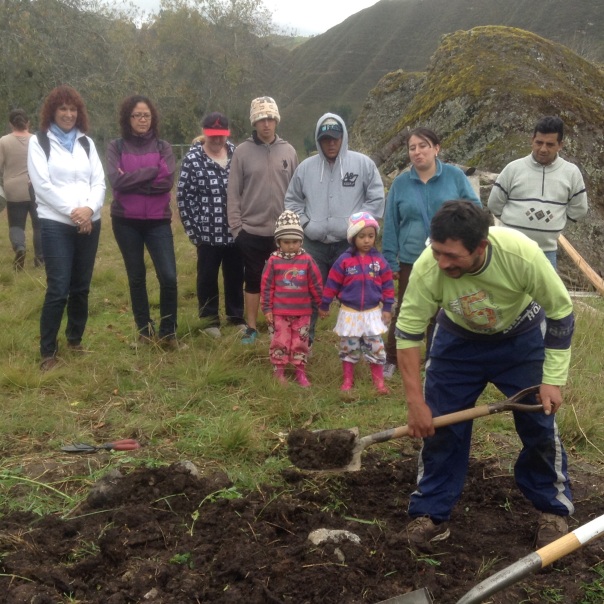
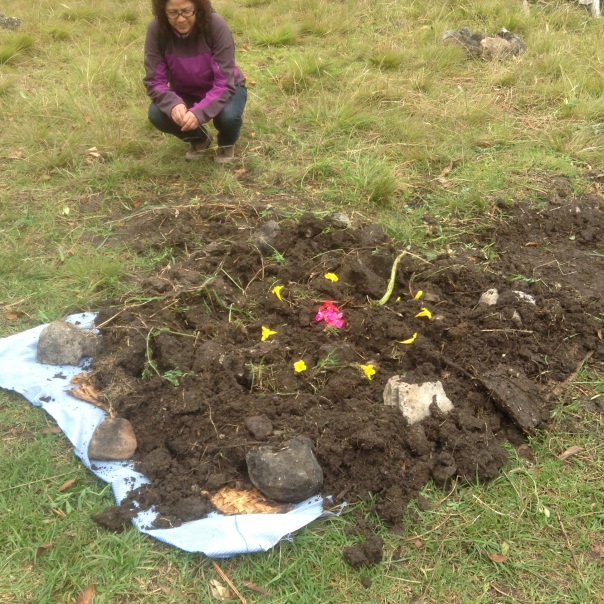
Nube offered prayers to Pachamama and taught us a song that we sang many times while preparing the food. Click on the link below to see a short video.
I guess we could have watched the pit for the next two hours but everybody knows the proverbial watched pot never boils so we went to the museum and then walked around the area to see some of the ruins.
Many of the artifacts housed in the Chobshi museum were discovered in the “Cueva Negra” or Black Cave. This cave is not very big or deep but it was strategically located near the Rio Santa Barbara and the Camino Cañari and was a shelter to the hunter-gathers who lived in the area before the birth of Christ. Many tools and other objects made from obsidian have been found in the area. This is important evidence that the people who passed through and lived in the Chobshi area travelled considerable distances as obsidian is of volcanic origin from 450 km north of this area.


Not far from the cave, is the Castillo de Duma – a three roomed fortress of an important Cañari leader named Duma.




More ruins.
Is it time for lunch yet? Yes! It is.
But first we have to unbury our food. 
Sorry, no pictures of us eating for the obvious reason: We were eating! Suffice it to say, the food was delicious. No chemicals or additives in this pachamanka meal. Just wholesome, good old fashioned dirt and burnt alfalfa. Didn’t matter – it was great.
I’m sure you’re thinking it just couldn’t get any better than this, right? Right. Except we got a bonus. Gumercindo took us on another caminata (little hike). This time into the most beautiful canyon that ended up at a waterfall. Sure, the ground was a little wet and there was plenty of “caca de vaca” to step in (cow pies) but I think you’ll agree from the pictures that it was well worth the minor hardships.
Of course, we’re in the dry season so I know everyone has seen more spectacular waterfalls than this one. But the best part of our little walk through the meadow and into the canyon was the complete and utter peace we experienced. When your normal is car and house alarms, vehicle horns, trucks and buses with deteriorating (or no) mufflers, and barking dogs, the sound of an occasional mooing cow, squealing pig or even a braying donkey is music to your ears!
Well, that was our trip to Chobshi. Of course, we had the 90 minute drive on very windy roads back to Cuenca but there was no other way around that. As lovely as Chobshi is, I’m not ready to live there! Until next time, here’s . . .
What We’ve Learned: What looks like a rutted cow path when you’re traveling in the Andes, can be a road to a little paradise.
What We Need To Learn: Bring a change of shoes when hiking in the Andes!










